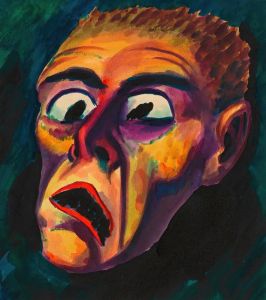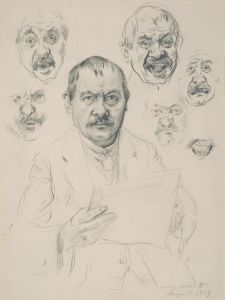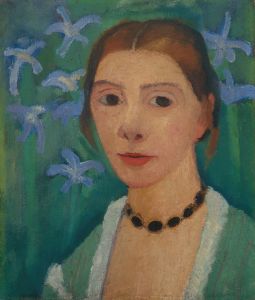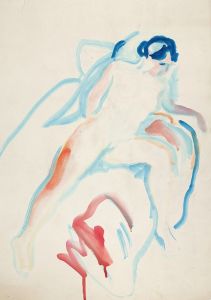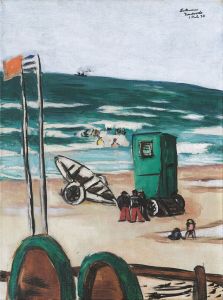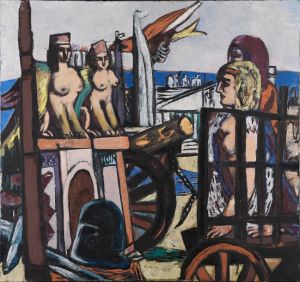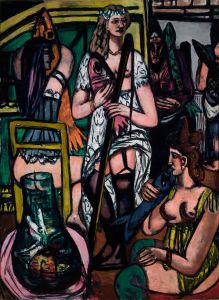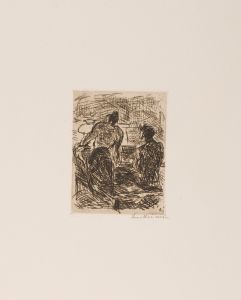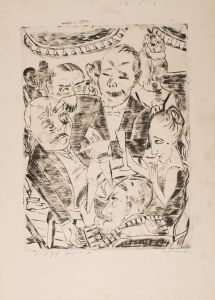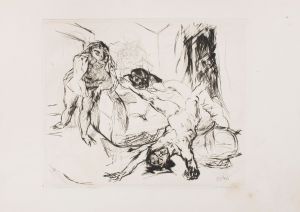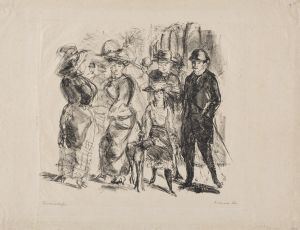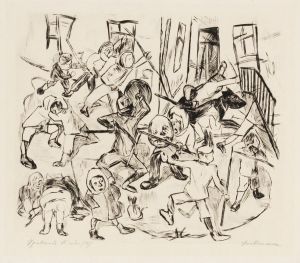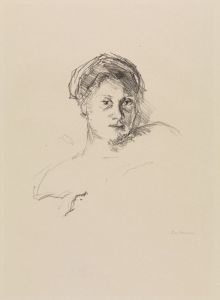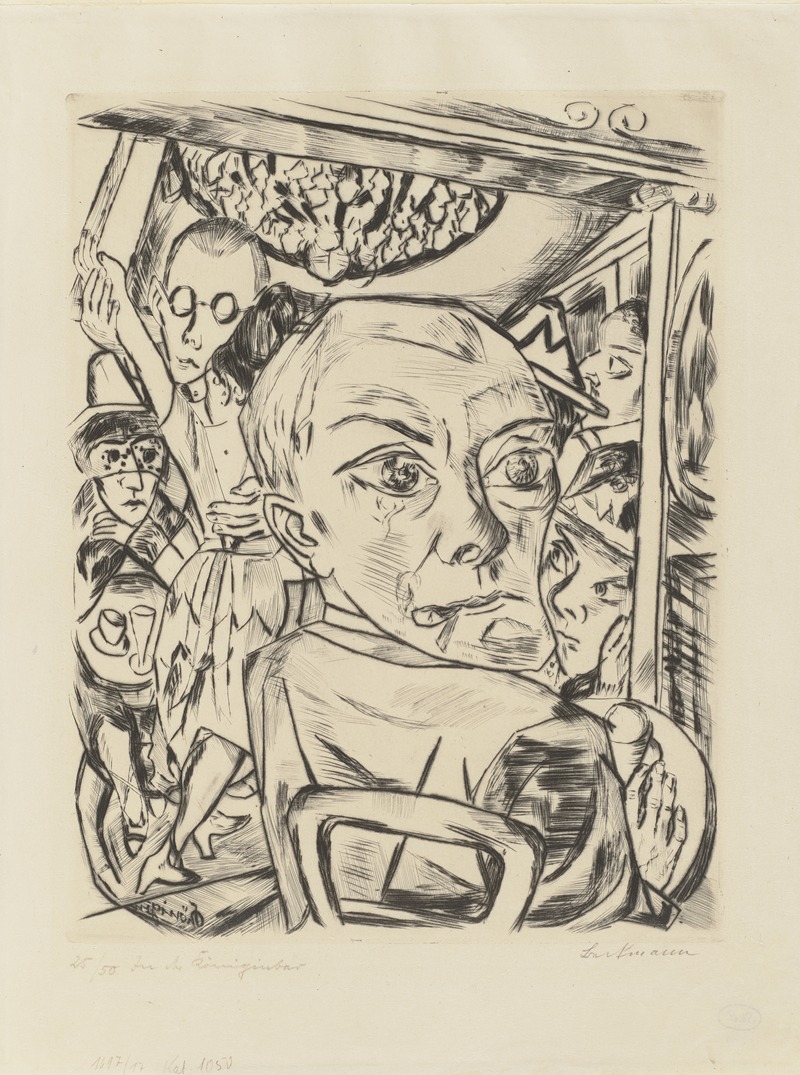
Königin Bar
A hand-painted replica of Max Beckmann’s masterpiece Königin Bar, meticulously crafted by professional artists to capture the true essence of the original. Each piece is created with museum-quality canvas and rare mineral pigments, carefully painted by experienced artists with delicate brushstrokes and rich, layered colors to perfectly recreate the texture of the original artwork. Unlike machine-printed reproductions, this hand-painted version brings the painting to life, infused with the artist’s emotions and skill in every stroke. Whether for personal collection or home decoration, it instantly elevates the artistic atmosphere of any space.
Max Beckmann's painting "Königin Bar" is a significant work within the oeuvre of the German painter, who is often associated with the New Objectivity movement. Beckmann, born in 1884 in Leipzig, Germany, is renowned for his expressive and often enigmatic style, which frequently explores themes of existentialism, modernity, and the human condition. "Königin Bar," painted in 1946, is a compelling example of his mature work, created during a period of significant transition in his life.
The painting was completed after Beckmann had fled the turmoil of World War II in Europe. In 1937, the Nazi regime had labeled his work as "degenerate art," leading to his dismissal from his teaching position at the Städelschule in Frankfurt. Consequently, Beckmann spent the war years in Amsterdam, before eventually emigrating to the United States in 1947. This context of displacement and adaptation to new environments is crucial to understanding the thematic undercurrents of "Königin Bar."
"Königin Bar" is characterized by Beckmann's distinctive use of bold colors and dramatic, almost theatrical compositions. The painting depicts an interior scene, which is a recurring motif in Beckmann's work, often serving as a microcosm of broader societal dynamics. The title, which translates to "Queen Bar," suggests a setting that is both regal and commonplace, blending the ordinary with the extraordinary—a hallmark of Beckmann's narrative style.
The figures in "Königin Bar" are rendered with Beckmann's typical robust and angular forms, exuding a sense of tension and introspection. His use of space is complex, often compressing the pictorial plane to create an intense, claustrophobic atmosphere. This technique invites viewers to engage deeply with the psychological dimensions of the scene, reflecting Beckmann's interest in the inner workings of the human psyche.
Beckmann's work is often noted for its symbolic richness, and "Königin Bar" is no exception. The painting's composition and the interactions between its figures can be interpreted as a commentary on post-war society, identity, and the search for meaning in a rapidly changing world. However, Beckmann's symbolism is deliberately ambiguous, allowing for multiple interpretations and encouraging viewers to draw their own conclusions.
The painting is also a testament to Beckmann's mastery of technique. His brushwork is confident and dynamic, contributing to the overall sense of movement and vitality within the scene. The color palette, while varied, is carefully controlled, with Beckmann employing contrasts of light and shadow to enhance the emotional impact of the work.
"Königin Bar" is housed in the Saint Louis Art Museum, which holds a significant collection of Beckmann's works. The museum's acquisition of this painting underscores Beckmann's influence and the enduring relevance of his artistic vision. His ability to capture the complexities of human experience continues to resonate with audiences, making "Königin Bar" a vital piece for understanding both Beckmann's personal journey and the broader narrative of 20th-century art.
In summary, "Königin Bar" by Max Beckmann is a profound exploration of human experience, rendered with the artist's characteristic intensity and depth. It stands as a testament to Beckmann's enduring legacy as a pivotal figure in modern art, reflecting both the personal and universal themes that define his work.





